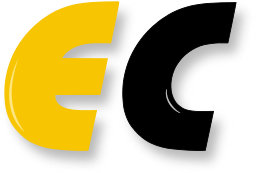13IAVS: 13th Conference of the IAVS-AISV Visual Semiotics & Agency / Sémiotique visuelle et agentivité / Semiótica visual & agencia Bogotá, Colombia, September 28-30, 2023 |
| Conference website | https://aisviavs.wordpress.com/aisv-iavs-2023/ |
| Submission link | https://easychair.org/conferences/?conf=13iavs |
| Submission deadline | May 31, 2023 |
In their seminal work, Traité du signe visuel (1992), Groupe μ asks the fundamental question whether visuality as such is a Hjelmslevean form, that is, whether it is pertinent to the nature of meaning conveyed. Once you abandon the autonomy postulate of structuralism, taking into account the psychology and phenomenology of perception, as suggested by Sonesson already in 1989, and now more widely accepted within cognitive semiotics, it becomes obvious that all phenomena offered to (human) perception by way of the visual sense must share numerous properties, in spite of differing in other respects. Whether or not this human kind of visuality also shares properties with visually conveyed experience of other animals is a further issue for investigation.
The domain of visual semiotics is therefore much wider than that of the semiotics of pictures, with which it is often identified, or which is at least the part most often practised. It goes beyond architecture, urbanism, and the like, to comprehend all kinds of artefacts, whether the result of artisanal practice or contemporary design, even pertaining to direct perception itself. Indeed, large parts of the meaning we experience in relation, if not to our own body, then certainly to that of others, is visual, as is the meaning of clothing, food, gesture, sports events, tourism, dance, theatre, and performance in the artistic sense. The same is true of everything from scarecrows and dummies in the show window to sculptures and public monuments. Many of these examples address several different senses (apart from being polysemiotic in Zlatev’s sense (2019), that is, involving different kinds of meaning-making), but visuality often constitutes the Dominant in the Prague school sense of the term. But even in cases in which visuality doesn’t predominate, more thorough investigations than those of which we dispose at present are called for. The question What does the visual do? has become a highly relevant one.
In exploring the wider domain of visuality, we cannot help but encountering an issue which has recently acquired the centre stage of scholarly interest in archaeology, cognitive science, and phenomenology: the nature of agency. Without forgetting the pioneering work on semiotics of agency by Douglas Niño (2015), it is no doubt in the critique of Lambros Malafouris (2013) that agency has come to the fore as an issue within semiotics. Precisely because it is highly reductionistic, Malafouris’s work has already started to spur a wider semiotic account of agency. No doubt, the seminal work of Alfred Gell and Shaun Gallagher has taught us that agency is a complex, multi-layered notion. With reference to the authors quoted, it may be better to formulate the issue of agency at the general level of visuality than at that of pictures. This is not to deny that this question also has urgency with respect to pictures. It was as a reaction to the idea of Jean-Marie Schaeffer (1987), according to whom photography can be produced by purely causal means, without any intervention of purpose, that Sonesson (1988; 2015) developed the idea of remote intentions. But the issue of agency becomes ever more convoluted with the prevalence of computer-engineered pictures, starting with software packages and pre-sets and ending up with image-producing algorithms, for instance, on the internet, video games, film, streaming platforms, etc.
Outside of semiotics, recent discussions on the role of the agency in the generation of meaning show a panorama of continuous developments, but without evident trends of convergence. For instance, in the introduction to their Handbook of Phenomenology of Agency, Erhard & Keiling (2020) list, among others, topics such as the metaphysics of agency, rationality, voluntary and involuntary action, the phenomenology of agency, the phenomenology of freedom, and embodied agency. Thus, agency has an ontological meaning (the ability to do), with aesthetic (doing with aesthetic effects), epistemic (doing with the effect of knowing) and ethical-political consequences (doing with the effect of intervening). But, at the same time, it can be inquired what the relation between these topics and visual meaning-making is. What is, for example, the relation between pictures and embodied agency? What is the relationship between agency and visual media reception? (cf. Susanne Eicher, 2014). Is there anything which is characteristic about the phenomenology of visual pictorial perception? Or in the other direction, what is the impact of visual images on the agency and the sense of the agency? What is the relation between visual persuasion and agency control? What is the reach and scope of pictures in power and politics (the relation of agencies on agencies)?
We invite those researchers focused on visual semiotics to participate, as well as those versed in socio-semiotics, or in philosophy, psychology, social sciences, and cognitive action, who are interested in sharing their research, discoveries, and findings pertaining to the relationship between agency (in its broadest sense) and visual semiotics. Although we welcome contributions about the semiotics of pictures as always, we would like to see a new emphasis on other kinds of visual semiosis, and on agency in all the senses of the term, applied not only to the act of creating visual artefacts but also to its interpretation.
Submission Guidelines
All papers must be original
Committees
Program Committee
-
Scientific committee:
- Maria Giulia Dondero,
- Everardo Reyes,
- Anne Bayaert-Geslin,
- Isabel Marcos,
- Elizabeth Harkot-de-la-Taille,
- Rima Harfouche
- Juan Carlos Mendoza Callazos,
- Tiziana Migliore,
- Gunnar Sandin
Organizing committee
Contact
- Douglas Niño
- Local contact:
- edison.nino@utadeo.edu.co
All questions about submissions should be emailed to: edison.nino@utadeo.edu.co
